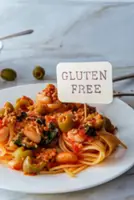Spinach contains oxalate which binds to calcium. Once cooked, this problem is solved though. — J HOWELL/Pexels
We now focus on a common issue seldom highlighted by suppliers of multivitamins and mineral supplements. It is the subject of nutrient conflicts, where nutrient absorption are impaired by one or more other nutrients.
Many people would assume that a multivitamin/multimineral pill will simply deliver all the required nutrients in a simple, convenient format. But this is not always true. Curiously, it is feasible to suffer significant deficiencies in certain nutrients even while supplementing with the same nutrients.
Nutrient conflicts
To comprehend why nutrients can conflict with each other, one first needs to understand the mechanisms for nutrient absorption.
Nutrients such as minerals get absorbed via various transport mechanisms from the digestive system into the blood and organs. The major transport mechanisms involved for minerals are (i) paracellular transport, (ii) transcellular transport, (iii) cellular entry, (iv) intracellular trafficking and, (v) secretory pathway transport; however, they are too complex to be explained here.
The issue is that calcium and magnesium share the same transport mechanism and excessive intake of either mineral impedes the absorption of the other. Similarly, high zinc levels will interfere with copper absorption due to competition for their common transport mechanism.
Other nutrients such as vitamins can interfere with each other due to competition for metabolic pathways for various vitamins, especially in the liver. For example, the fat-soluble vitamins E and K share the same metabolic pathway. Excessive vitamin E molecules can crowd the metabolic pathway which means that not enough vitamin K gets absorbed by the body. As vitamin K is crucial for blood clotting, a deficit in this vitamin may result in excessive bleeding, increasing the risks of hemorrhages and/or making hemorrhages more severe.
Certain vitamin pairs are also synergistic and generally need to be taken together. Overdoses of one without the other either have no effect or can mask a deficiency in the other vitamin. Folic acid (vitamin B9) is optimally absorbed by the body in combination with vitamin B12, but a curious situation exists in that a deficiency in B12 may be temporarily masked by overdoses of B9. Vitamin B12 is crucial for neurological health but vitamin B9 can complicate and even prevent a diagnosis of B12 insufficiency. Hence, it is ill-advised to eat foods heavily fortified with B9 without consuming B12 at the same time.
Nutrients can provoke excess elimination of other nutrients. A common example is the overconsumption of sodium via salt and salty foods. Soluble multivitamin tablets often have high amounats of sodium as the fizzy agent is usually sodium bicarbonate. The excretion of sodium tends to provoke calcium excretion via urine. As this calcium comes from the bones, this can lead to calcium deficiency and poor bone health.
Certain overdoses of nutrients can have antagonistic reactions to other nutrients. A classic example that can particularly affect vegans is the calcium binding of non-heme iron (or plant-based iron). This binding creates insoluble complexes that cannot be digested, hence reducing the amount of bioavailable iron for absorption.
Additionally, calcium can interfere with both animal and plant iron by impeding iron uptake at the lumenal (interior) surface of the intestines. This is why it is not advisable to take iron supplements with milk or other dairy or calcium-rich products.
Counteracting nutrient conflicts
This can be simple. Just ensure that conflicting nutrients are not consumed together; i.e. wait two hours between ingesting one nutrient and the other conflicting nutrient. Also, make sure that water-soluble nutrients are taken with water and fat-soluble nutrients with fats or oils.
However, some nutrient conflicts need some preparation to avoid. Grains and legumes such as lentils and soybeans contain phytic acid, a compound that binds readily to minerals such as iron, zinc, magnesium, calcium, and manganese, forming insoluble salts that are not easily absorbed. The best way to eliminate phytic acid in such foods is to soak the grains overnight or until they swell up.
Foods such as spinach and rhubarb contain oxalates which bind to calcium, turning into salts that are difficult to absorb. Cooking such foods would eliminate most of such issues.
Free radicals and why some are really good for health
This is a complex subject, not least because everybody believes that antioxidants are always good for health, and that is because they mop up damaging free radicals in the body. In general, that is largely true, but it cannot be completely true based on the results of the large-scale SELECT (Selenium and Vitamin E Cancer Prevention Trial) and ATBC (Alpha-Tocopherol, Beta-Carotene Cancer Prevention) studies.
The trials were premised on introducing sizable amounts of antioxidants into the body with the expectation of better health scores, but the results instead showed much poorer outcomes in terms of cancers and deaths than diets without such antioxidants.
So, what is going on? The answer may lie in an interesting feature of the human immune system.
Free radicals are powerful molecules that can induce cell death, and the human immune system has evolved to harness and manage this killer feature of free radicals to destroy pathogens and abnormal/mutant cells. There are many types of free radicals, and they originate from different sources.
Some come from external sources such as sunlight, environmental pollution, background radiation, etc. More will probably come from diets where we often ingest free radicals whether we like it or not, and some are manufactured by the body itself, in response to pathogens or when provoked by other free radicals or nuisance compounds.
The good free radicals
The human immune system creates a few select types of free radicals as one of its defense mechanisms against pathogens and mutated/deformed cells (e.g. cancers). Mostly the immune system relies on Reactive Oxygen Species (ROS) radicals to kill pathogens, with additional Reactive Nitrogen Species (RNS) radicals to finish the job where required.
Note that the processes involved in free radical production by the immune system are too complex to be covered in this column, so only summaries are provided. Note that all the following free radicals are designed to induce cell death via a process called apoptosis.
The main ROS free radical is hydrogen peroxide (H2O2), and it is mainly produced by white blood cells called phagocytes, in particular, neutrophils and macrophages. There is also evidence that H2O2 may also act as an important signaling molecule, which activates the other components of the immune system.
Another important ROS free radical is superoxide anion, produced via processes driven by the NADPH oxidase enzyme. If you are curious, the full name of the enzyme is nicotinamide adenine dinucleotide phosphate oxidase.
Also important against microbes is hypochlorous acid, another ROS free radical also generated by neutrophils on contact with bacteria and other pathogens.
The major RNS free radical is nitric oxide, which can also restrict cell proliferation.
For cancers, when detected by the immune system, another type of free radicals called hydroxyl radicals is generated. This is a highly reactive molecule, capable of causing significant damage to cellular components, leading to cancer cell death.
The immune system is sensitive to its own free radicals and uses control mechanisms based on enzymes such as superoxide dismutase, catalase and glutathione peroxidase to damp down potential overactivity. This is a complex subject for another time.
Note that some chemotherapy drugs for cancers work by stimulating the immune system’s production of free radicals to destroy tumours in the body.
Hence, it is important to understand that a select few free radicals are created by the immune system and they are useful for protecting the body against infections or cell mutations.
Not so good free radicals
At this point, please note that even good free radicals can become problematic, especially if they are present in the wrong metabolic setting.
We are normally constantly acquiring damaging free radicals from our diets and our environment. Some externally-introduced free radicals are identical to the ones produced by the immune system, along with others such as hydroperoxyl radicals, singlet oxygen, peroxynitrites, peroxyl radicals, alkoxyl radicals, etc. The detailed list of free radicals can be very long as many molecules can form various kinds of reactive radical molecules.
Many of the above-mentioned external free radicals are derived from AGEs (Advanced Glycation End-products), produced when food is browned during roasting, baking, or frying. They are known to cause various diseases, including metabolic syndrome, by inducing oxidative stress and inflammation in the body. And it is very easy to consume (and often overconsume) such free radicals from delicious foods.
Possible conclusion from SELECT and ATBC Trials
A plausible comment about the poor health outcomes of the SELECT and ATBC trials may be that constant overdosing on antioxidants may have excessively dampened down the normal functions of the immune system. The daily overdosing of antioxidants during the trials may be neutralizing the immune system’s own free radicals (possibly hydroxyl radicals) and preventing them from tackling diseases, in particular certain cancers.
Summary
While free radicals themselves are not directly poisonous, their accumulation and resulting oxidative stress and inflammatory effects can be toxic to cells and tissues over time. The body requires a balance between free radicals and antioxidants for optimal health, cellular function, and immune function.
Therefore the human body needs antioxidants to counter excess damaging free radicals derived from diets and the environment. Antioxidants are also called radical scavengers and some are known to prefer specific types of free radicals, such as vitamin C against peroxynitrites, and polyphenols against peroxyl and alkoxyl radicals.
There is a lot of sense in acquiring a broad base of radical scavengers from a diverse diet rich in fruits, vegetables, nuts, and other plant-based foods. Additionally, different antioxidants may have synergistic effects and when combined, can provide better protection against a wider range of free radicals. However, there is probably no need to persistently overdose on antioxidants, especially vitamins A, E, and selenium.
Balance, as always, is key.
The views expressed here are entirely the writer’s own.








